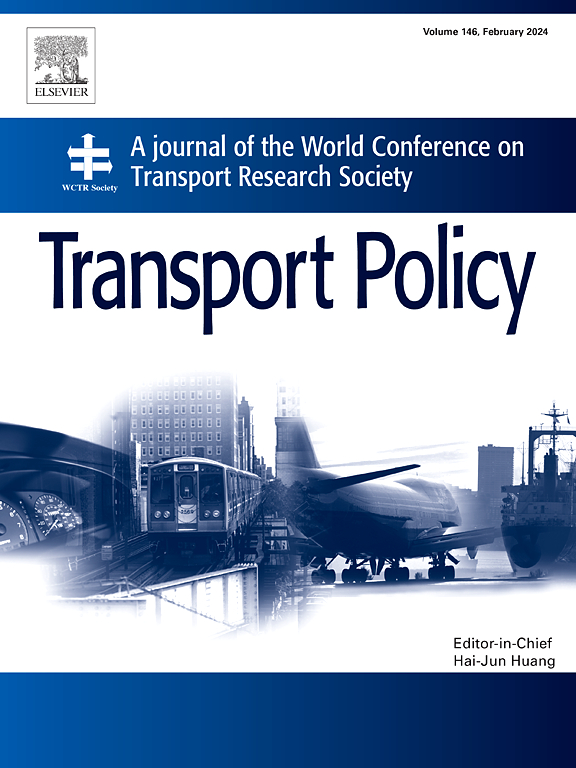Simulation of land use changes by capturing the different impacts of rail transit in both mother city and new towns
IF 6.3
2区 工程技术
Q1 ECONOMICS
引用次数: 0
Abstract
Rail transit system plays an important role in connecting the urban center, new towns and suburbs in the metropolitan area. Exploring the methods of integrating rail transit and land use in different locations is essential to improve trip rates and promote transit-oriented development (TOD). Taking Wuhan, China, as a case study, this research uses a cellular automaton-based random forest (CA-RF) model to simulate land use change surrounding rail transit by capturing the impact differences in mother city (MC) and new towns (NT). An impact area identification model is proposed to recognize the most sensitive threshold of land use change in both MC and NT stations, which are 1000m and 1200m, respectively. The characteristics of land use change from 2010 to 2020 are analyzed and compared. The CA-RF model calibration shows that transportation and spatial accessibility present wide variations in driving land use change surrounding the MC and NT stations. The high accuracy of CA-RF model, which is 88.1% for MC and 82.1% for NT, indicating its effectiveness in quantifying the non-linear relationship of land use change and spatial attributes. The forecasted land use maps for proposed rail stations provide a reference for governments and planners in policy intervention and decision-making. This research framework can be applied to other metropolitans to explore the regulations of land use development and promote transit-oriented sustainable development.
通过捕捉轨道交通对母城和新城的不同影响,模拟土地利用的变化
轨道交通系统在连接大都市区的城市中心、新城和郊区方面发挥着重要作用。探索不同地区轨道交通与土地利用相结合的方法对于提高出行率和促进公交导向开发(TOD)至关重要。本研究以中国武汉市为例,使用基于细胞自动机的随机森林(CA-RF)模型,通过捕捉母城(MC)和新城(NT)的影响差异,模拟轨道交通周边土地利用的变化。研究提出了一个影响区域识别模型,以识别母城站和新城站土地利用变化的最敏感阈值,分别为 1000m 和 1200m。分析并比较了 2010 年至 2020 年的土地利用变化特征。CA-RF 模型校核结果表明,交通和空间可达性在驱动 MC 站和新界站周边土地利用变化方面存在较大差异。CA-RF 模型的准确率很高,其中 MC 站为 88.1%,NT 站为 82.1%,这表明它能有效量化土地利用变化与空间属性之间的非线性关系。拟建轨道站点的土地利用预测图为政府和规划人员提供了政策干预和决策参考。这一研究框架可应用于其他大都市,以探索土地利用发展的规律,促进以公交为导向的可持续发展。
本文章由计算机程序翻译,如有差异,请以英文原文为准。
求助全文
约1分钟内获得全文
求助全文
来源期刊

Transport Policy
Multiple-
CiteScore
12.10
自引率
10.30%
发文量
282
期刊介绍:
Transport Policy is an international journal aimed at bridging the gap between theory and practice in transport. Its subject areas reflect the concerns of policymakers in government, industry, voluntary organisations and the public at large, providing independent, original and rigorous analysis to understand how policy decisions have been taken, monitor their effects, and suggest how they may be improved. The journal treats the transport sector comprehensively, and in the context of other sectors including energy, housing, industry and planning. All modes are covered: land, sea and air; road and rail; public and private; motorised and non-motorised; passenger and freight.
 求助内容:
求助内容: 应助结果提醒方式:
应助结果提醒方式:


